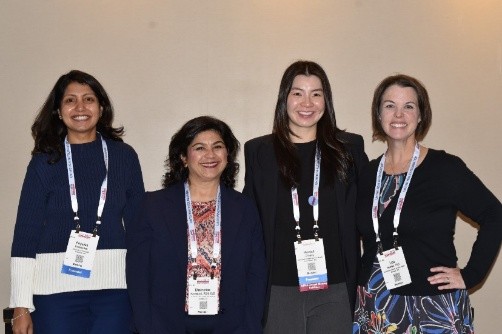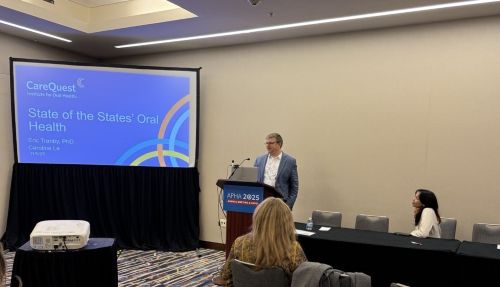Enter your email to receive the CareQuest newsletter:
November 19, 2025
By Emily Haanschoten, MSPH, Biostatistician, CareQuest Institute
All disciplines across public health under one roof collaborating to “champion optimal, equitable health and well-being for all.” A clear and urgent call to action to “make the public’s health a national priority.” And more than 12,000 attendees.
This November’s American Public Health Association (APHA) annual meeting and exposition in Washington, DC, had all of that and more. As a biostatistician in my first year at CareQuest Institute (I started in March), I was excited to see how we contributed to these critically important conversations.

Dr. Lisa Heaton
In particular, these four presentations — three from my colleagues at the Institute — stuck with me long after the conference ended.
- Keynote speakers emphasized the need for making actionable plans to strengthen and reinforce public health infrastructure and policies right now. In “Mission Possible — Rebuilding the US Health System and Reestablishing Health Leadership to Become the Healthiest Nation,” speakers highlighted the opportunity to envision a future that integrates public health entities and increases collaboration across fields to achieve optimal outcomes.
- CareQuest Institute Science Writer Lisa Heaton, PhD, and Health Sciences Specialist Hannah Cheung, MPH, MS, RDH, presented in the oral session “Collaborative Community-Based Oral Health Strategies,” highlighting strategies for integrating oral health into interprofessional and public health education. Hannah spoke about the development of an interprofessional education model at the University of North Carolina at Chapel Hill, while Lisa presented research from the State of Oral Health Equity in America (SOHEA) survey that examined how many US adults receive oral health information from their medical providers. Both presentations speak to the need for continued medical-dental integration in the professional educational setting and in clinical practice. (And both links are worth a click if you have a minute!)
- In another oral session, “Smiles for Life: Aging and Oral Health,” CareQuest Institute Biostatistician Morgan Santoro, MPH, presented on oral health, care, and access among adults living with cognitive disabilities compared to adults living with other types of disabilities. Using data from the 2024 and 2025 SOHEA surveys, Morgan’s presentation highlighted the finding that adults with cognitive disabilities were more likely to report fair or poor oral health compared to adults with other disabilities. This research emphasizes the need to understand how different disabilities affect oral health outcomes and access.
- Building on CareQuest Institute’s body of work on emergency department (ED) utilization, Senior Director of Analytics & Data Insights Eric Tranby, PhD, presented “Who Seeks Dental Care in the ED and Why?” during the “Oral Health Systems: Beyond the Dental Chair” session. This research focused on “super-utilizers” of EDs (those who seek care through hospital EDs four or more times per year) and found that they are disproportionately more likely to visit for a non-traumatic dental condition than those who utilize the ED less frequently.

With such a large conference (more than 12,000 attendees!), I found many opportunities for learning and connecting across disciplines. As a biostatistician, I was very interested in presentations on machine learning techniques. These complex statistical models can provide deeper insights into big data and will be highly valuable to fully utilize in CareQuest Institute’s future work.
APHA fosters a highly collaborative environment full of people and organizations looking for initiatives and solutions to public health’s greatest challenges. I’m already looking forward to next year!